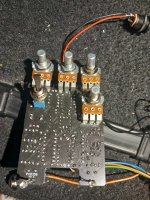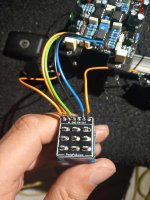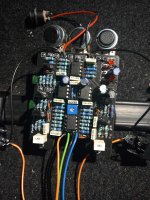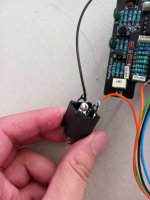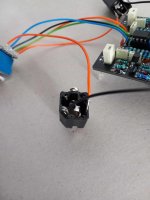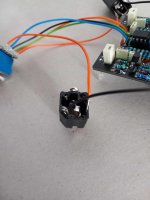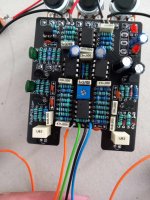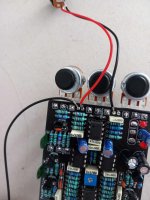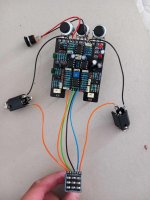I've assembled a caesar chorus and... it doesn't work but not in a way that has been described here (at least I didn't see)
all the LEDs turn on (they were backwards at first but that's corrected) true bypass works but there's no sound when the pedal is on
The rate knob works, it changes the LED speed (both inside and outside) and the switch activates the inside LED for the saw wave but the other knobs don't do anything (or maybe they do but no way to know as long as there's no sound)
Can you help me with that??
I don't think I made any mistake placing the components and I've checked again and again for dry solder or solder bridges and couldn't find any
all the LEDs turn on (they were backwards at first but that's corrected) true bypass works but there's no sound when the pedal is on
The rate knob works, it changes the LED speed (both inside and outside) and the switch activates the inside LED for the saw wave but the other knobs don't do anything (or maybe they do but no way to know as long as there's no sound)
Can you help me with that??
I don't think I made any mistake placing the components and I've checked again and again for dry solder or solder bridges and couldn't find any


